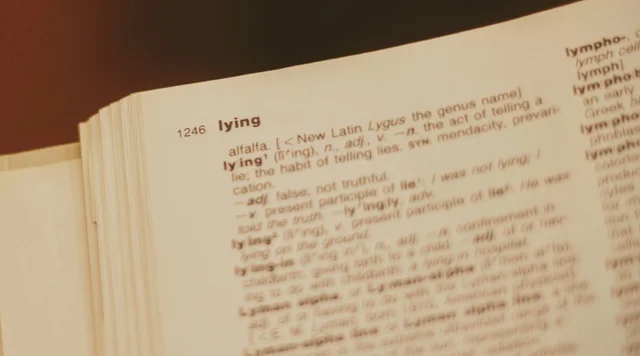
I always think there is something to be learned when the Court is critical of the parties' briefing on an issue.
Today in Magnolia Medical Technologies, Inc. v. Kurin, Inc., C.A. No. 24-1124-CFC (D. Del.), Chief Judge Connolly had strong words for both parties in response to the briefing on a motion to strike.
In its motion, the accused infringer sought to strike the patentee's supplemental interrogatory response served almost five months after the close of fact discovery. The interrogatory response disclosed that one of the patentee's products practices the asserted claims, and the patentee served it three weeks after the FDA approved the patentee's request to market the product.
The accused infringer first argued that the Court should strike the supplemental interrogatory responses based on the language in Chief Judge Connolly's scheduling order requiring a patentee asserting practicing products to identify them in its infringement contentions:
Disclosure of Asserted Claims and Infringement Contentions. Unless otherwise agreed to by the parties, no later than 30 days after the date of this Order, a party claiming patent infringement shall serve on all parties a "Disclosure of Asserted Claims and Infringement Contentions." Separately for each opposing party, the Disclosure of Asserted Claims and Infringement Contentions shall contain the following information:
. . .
If a party claiming patent infringement wishes to preserve the right to rely, for any purpose, on the assertion that its own or its licensee's apparatus, product, device, process, method, act, or other instrumentality practices the claimed invention, the party shall identify, separately for each asserted claim, each such apparatus, product, device, process, method, act, or other instrumentality that incorporates or reflects that particular claim ("Embodying Instrumentality");
Chief Judge Connolly's Form Scheduling Order for Non-Hatch-Waxman Patent Cases in Which Infringement Is Alleged.
In moving to strike, the accused infringer alleged that the amended responses violated this provision. The Court called that "classic legerdemain" because interrogatories are not infringement contentions:
in Kurin's view,"Magnolia could not possibly show good cause for th[e] amendment" of its interrogatory responses because Magnolia made a prototype ofthe Flow in February 2025 and completed design verification for the Flow's function and performance in May 2025. . . .
This argument is classic legerdemain and easily dismissed. Paragraphs 3(g) and 7 ofthe Scheduling Order concern infringement contentions, not responses to interrogatories.
Magnolia Medical Technologies, Inc. v. Kurin, Inc., C.A. No. 24-1124-CFC, at 4 (D. Del. Nov. 17, 2025).
The Court also rejected the accused infringer's next argument, that the Court "could" strike the responses under FRCP 37(c)(1) (dealing with using undisclosed evidence), because the accused infringer argued only that the Court "could" strike the evidence without adequately setting forth why it should:
[Accused infringer] Kurin next argues that [patentee] Magnolia's fourth supplemental responses "could also be struck" under Federal Rule of Civil Procedure 37(c)(1). . . . As an initial matter, whether I could strike Magnolia's supplemental responses under Rule 37(c)(1) is of no moment. The relevant question is whether I should or must strike the supplemental responses, and Rule 37(c)(1) does not bear on that question. Rule 37(c)(1) addresses what evidence and argument a party may present in court. See Fed. R. Civ. P. 37(c)(1)("If a party fails to provide information or identify a witness as required by Rule 26(a) or (e), the party is not allowed to use that information or witness to supply evidence on a motion, at a hearing, or at a trial, unless the failure was substantially justified or is harmless.").
Accordingly, I will deny Kurin's motion insofar as it seeks to strike Magnolia's fourth supplemental responses and objections to Kurin's interrogatories 8 and 9.
Id. at 4-5.
In a footnote, the Court noted some difficulties with the accused infringer's briefing:
Kurin complains in its briefing that Magnolia "could have disclosed" its belief that the Flow practices the asserted patents in February 2025 "or perhaps even much earlier," . . . and that Magnolia "with[e]ld" this contention . . . . Although Kurin never says it outright, it seems to be suggesting that Magnolia should have disclosed the Flow in response to interrogatories 8 and 9 no later than February 2025. Kurin, however, has never challenged Magnolia's objection to Kurin's definition of"Covered Products" in Magnolia's initial responses to Kurin's interrogatories. . . . I understand Magnolia's position to be that "Covered Products" should include only commercial products (i.e., products that Magnolia has sold). That position does not appear to be unreasonable, as interrogator 8 asked Magnolia to identify "[f]or each Covered Product. . . when it was first offered for sale." . . . Notably, Kurin did not disclose in its briefing the definition of "Covered Products" it used for its interrogatories; nor did it provide me with a copy of the definitions section of its interrogatories. . . . Consequently, Kurin gave me no way of knowing how it defined "Covered Products."
Id. at 5 n.1.
The patentee did not fare much better. The Court said the patentee had engaged in "doublespeak" by saying that it would not "inject[]" the new practicing product into the trial, while nonetheless seeking a pretrial order order permitting it to just that:
Kurin seems to be suggesting in its letter filed in support of its motion that Rule 37(c)(1) precludes Magnolia from introducing at trial evidence about the Flow. See D.I. 376 at 2-3. The argument, however, has been rendered moot, as Magnolia represented in its response to the motion . . . and at the pretrial conference . . . that it has no intention of injecting the Flow into the trial. Accordingly, I will deny the pending motion as moot insofar as it seeks an order precluding Magnolia from introducing at trial evidence and argument about the Flow.
I note, however, that Magnolia engaged in doublespeak on this issue and in doing so made resolution of the motion much more difficult and time-consuming than it should have been. For example, although Magnolia expressly stated on page one of its opposition to the motion that it "has no intention of injecting the Flow into the upcoming trial," it stated on page three of its opposition that "the FDA approval [of the Flow] is relevant to secondary considerations of nonobviousness." . . . In its opposition to Kurin's Motion in Limine No. 3, Magnolia similarly stated that "[sjecondary considerations [of nonobviousness] based on the Steripath Flow are ... relevant here." . . . And Magnolia identified in the Proposed Pretrial Order as an issue of fact that remains to be litigated "[w]hether Magnolia's Steripath Flow product(the 'Practicing Product') practices the asserted claims of the Magnolia Asserted Patents." . . . As I made clear at the pretrial conference, it would be manifestly unfair for Magnolia to be able to make the Flow an issue at trial. Accordingly, I will hold Magnolia to its representation that it will not inject the Flow into the trial.
Id. at 5-7.
Ultimately, it looks like the patentee may have won the battle but lost the war on this issue. The Court denied the accused infringer's motion to strike, but the patentee will nonetheless be precluded from raising that its product practices the claims.
If you enjoyed this post, consider subscribing to receive free e-mail updates about new posts.





